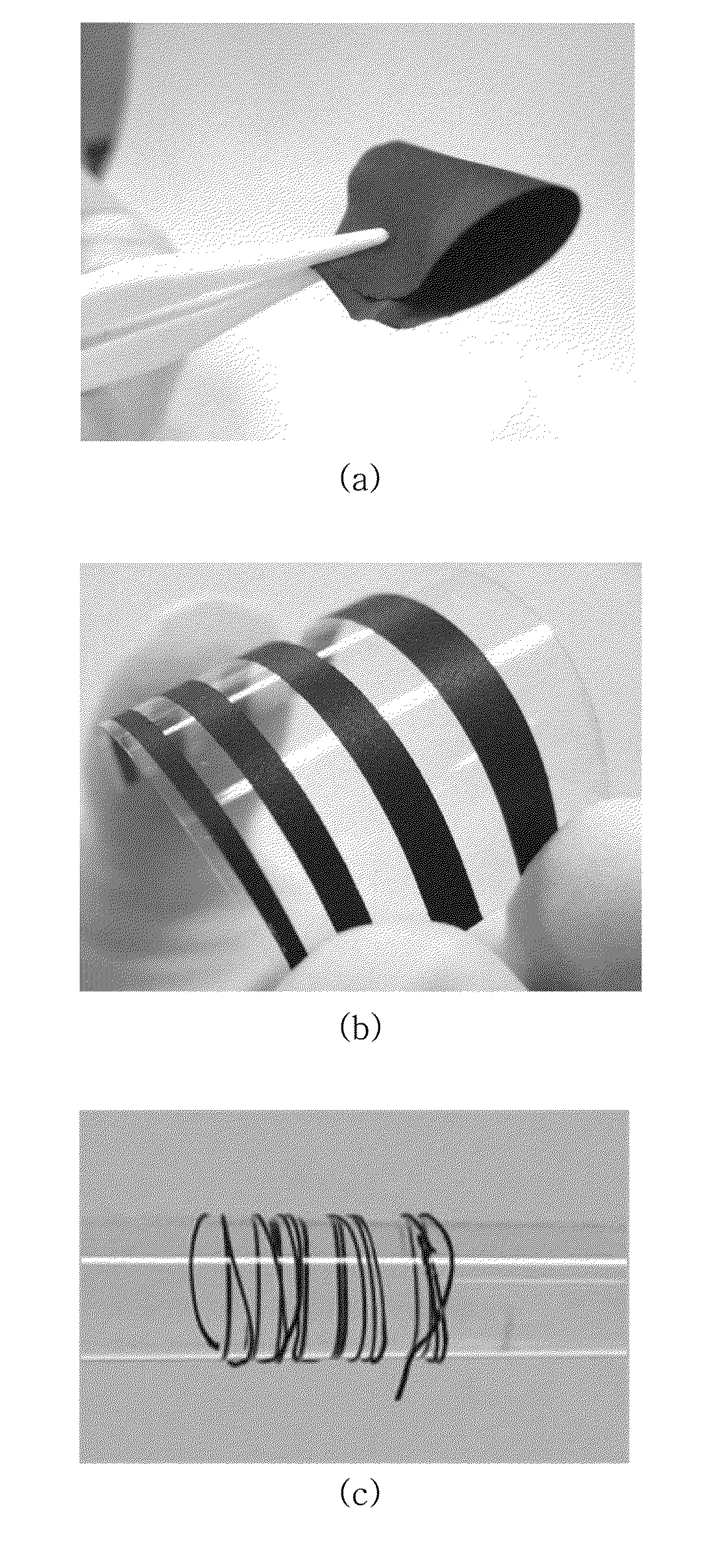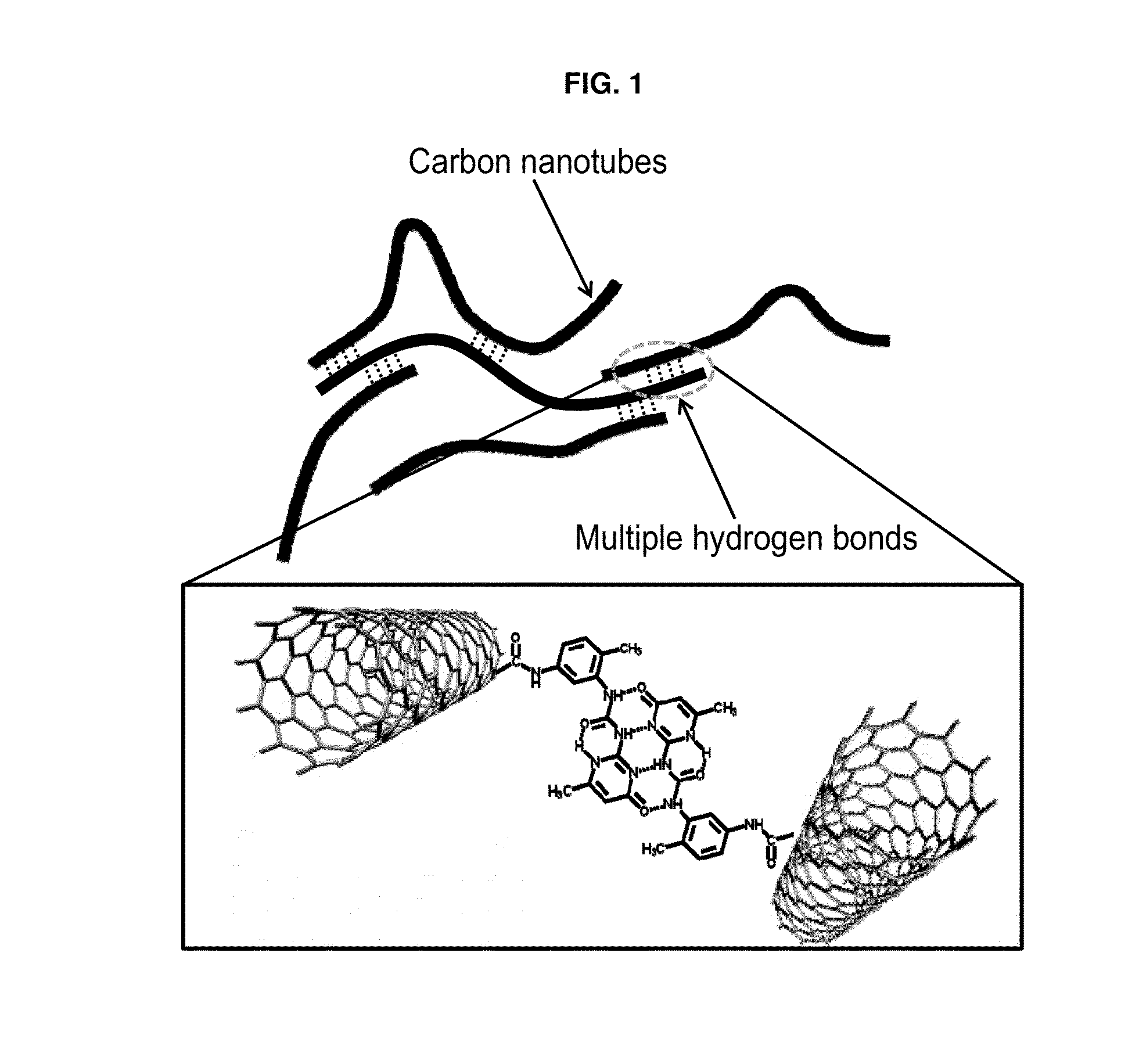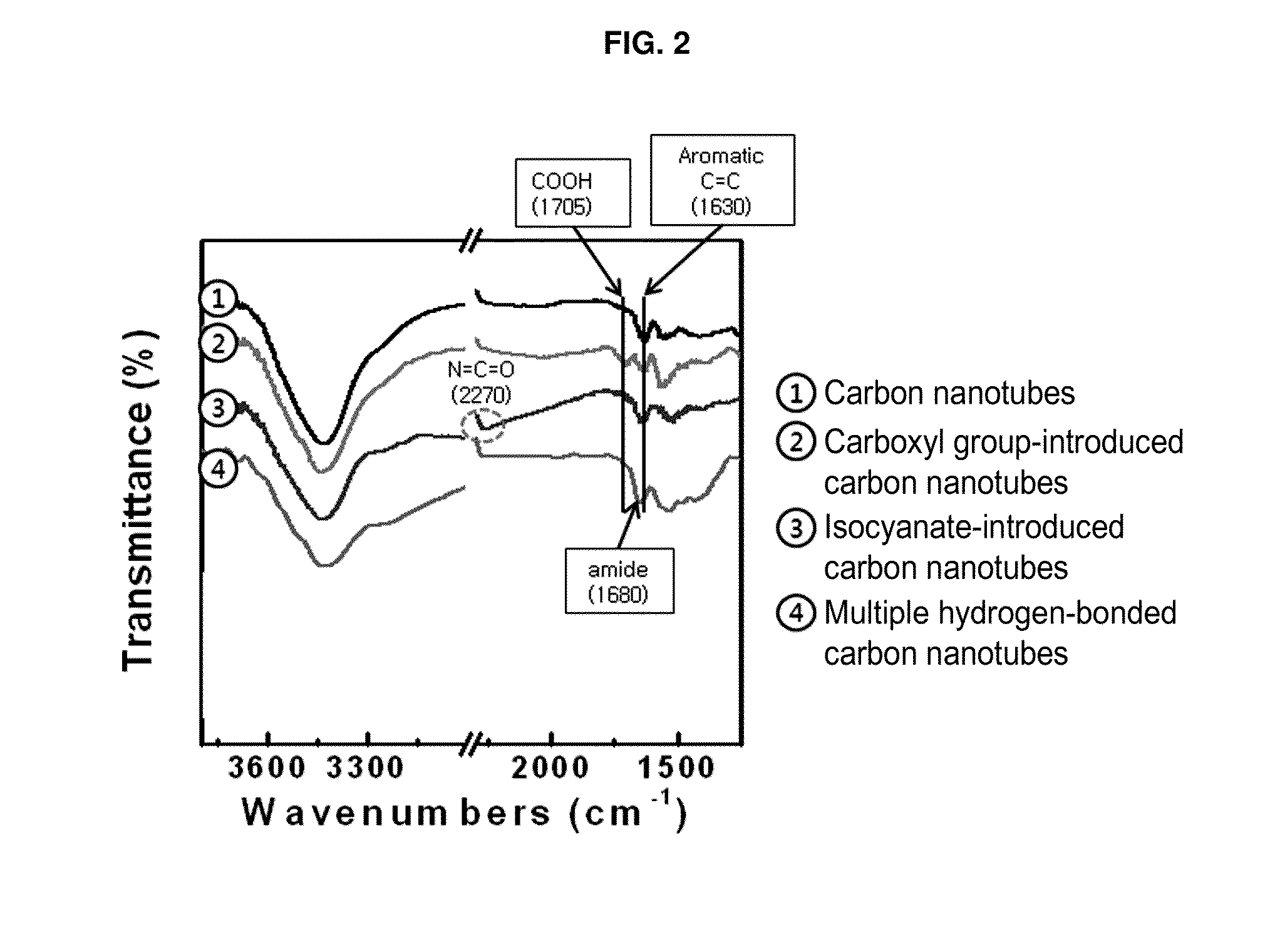Carbon nanomaterial having higher order structure by means of multiple hydrogen bonds and method for preparing same
- Summary
- Abstract
- Description
- Claims
- Application Information
AI Technical Summary
Benefits of technology
Problems solved by technology
Method used
Image
Examples
1st embodiment
[0027]A first embodiment of the present invention addresses a method of introducing carbon nanotubes with a functional group for quadruple hydrogen bonding.
[0028]The structure of a functional group for quadruple hydrogen bonding is schematically illustrated in FIG. 1.
[0029]Specifically, 10 g of multi-walled carbon nanotubes is mixed with 200 mL of a mixed solution of sulfuric acid and nitric acid (7:3 volume ratio), heated to 80° C., stirred for 24 hr, and then cooled to room temperature.
[0030]Subsequently, the resulting mixture is diluted with 800 mL of distilled water. The diluted solution is filtered at least four times using filter paper to remove the acid solution from the carbon nanotubes, and then dried, thus obtaining multi-walled carbon nanotubes having a carboxyl group (—COOH) introduced thereto.
[0031]The carbon nanotubes having a carboxyl group (—COOH) introduced thereto are dispersed at 100 mg / L in a dimethylformamide solvent, and then reacted in a manner that is mixed w...
2nd embodiment
[0039]A second embodiment of the present invention addresses a method of introducing graphene with a functional group for quadruple hydrogen bonding.
[0040]Specifically, carboxyl group-introduced graphene (graphene oxide) is prepared in such a manner that pure graphite is treated with sulfuric acid and KMnO4 for three days and purified with hydrogen peroxide and hydrochloric acid, giving graphite oxide that is then exfoliated using a sonicator.
[0041]The graphene oxide thus prepared is dispersed at a concentration of 500 mg / L in dimethylformamide and then reacted with isocyanate and amino-4-hydroxy-6-methyl pyrimidine as in the first embodiment, thereby introducing a functional group for quadruple hydrogen bonding.
[0042]The graphene thus prepared is simply stirred, thus preparing a paste having a solid content of 10%, which is then added with hydrazine (N2H4), stirred at 100° C. for 12 hr, and reduced.
[0043]When the reduced graphene paste is applied on a plastic substrate, a high cond...
PUM
| Property | Measurement | Unit |
|---|---|---|
| Electrical conductor | aaaaa | aaaaa |
Abstract
Description
Claims
Application Information
 Login to View More
Login to View More - R&D
- Intellectual Property
- Life Sciences
- Materials
- Tech Scout
- Unparalleled Data Quality
- Higher Quality Content
- 60% Fewer Hallucinations
Browse by: Latest US Patents, China's latest patents, Technical Efficacy Thesaurus, Application Domain, Technology Topic, Popular Technical Reports.
© 2025 PatSnap. All rights reserved.Legal|Privacy policy|Modern Slavery Act Transparency Statement|Sitemap|About US| Contact US: help@patsnap.com



